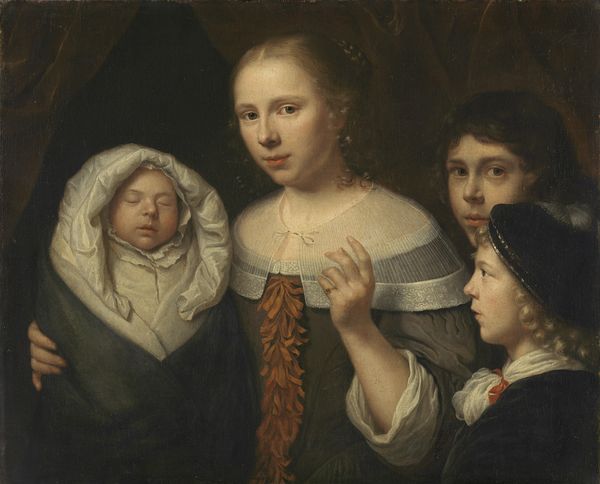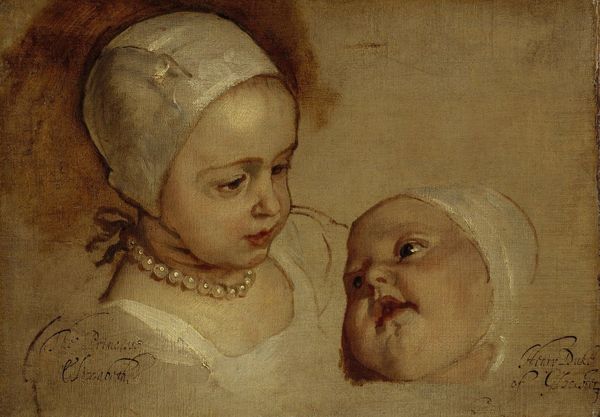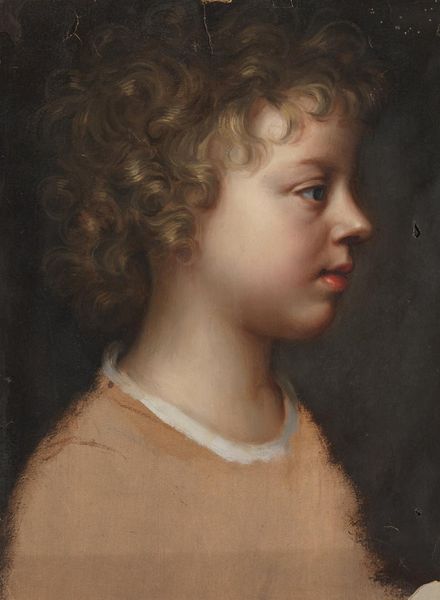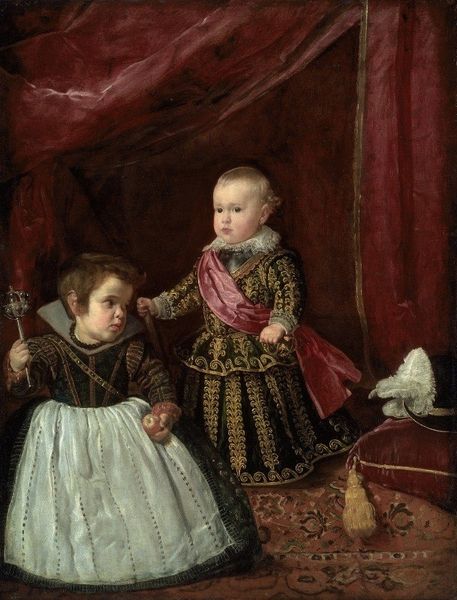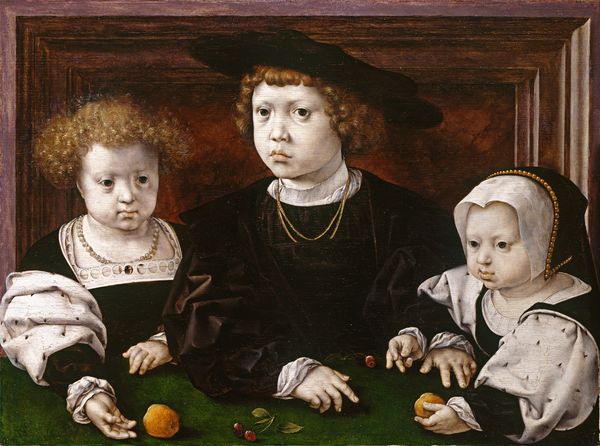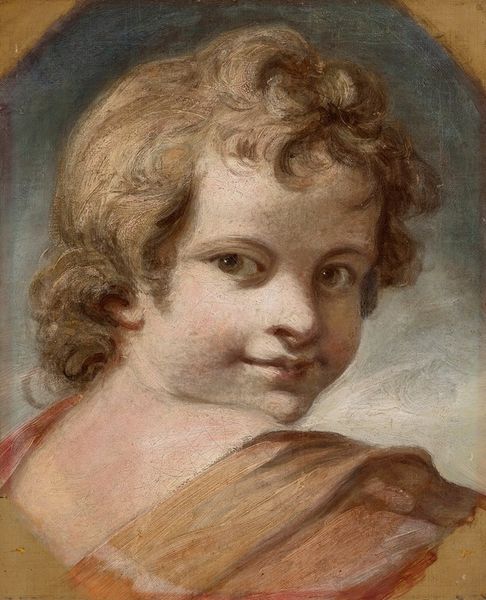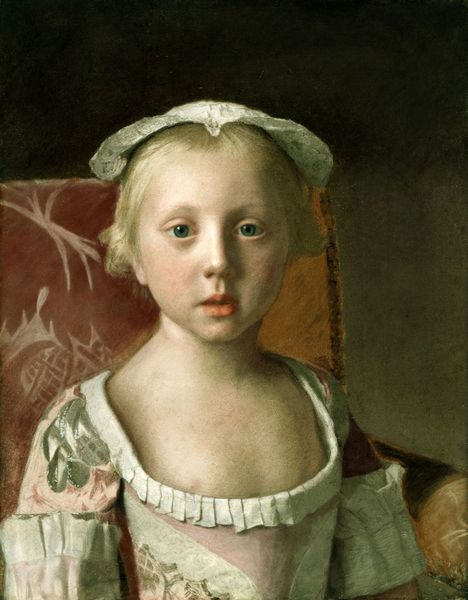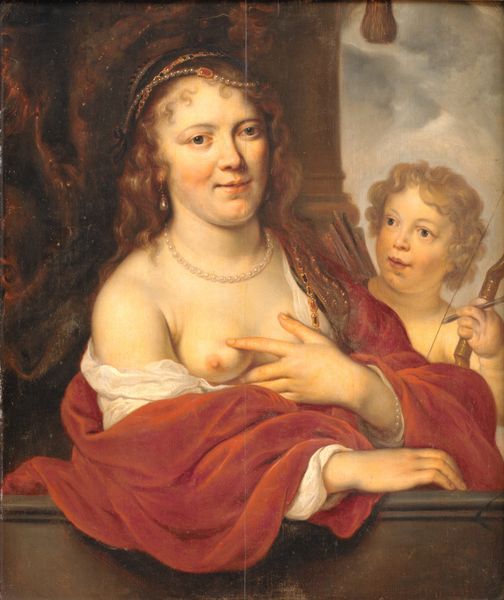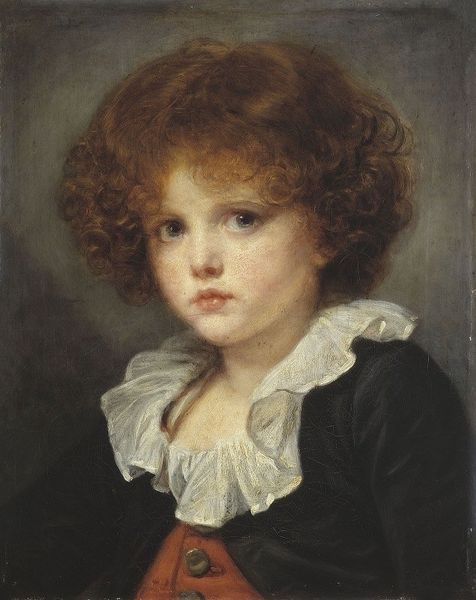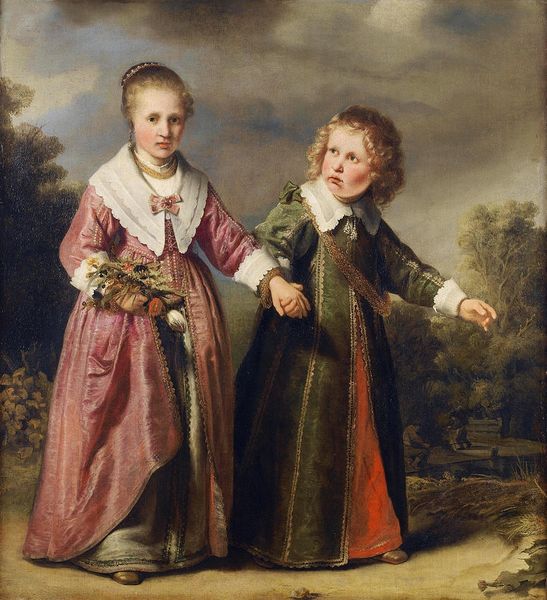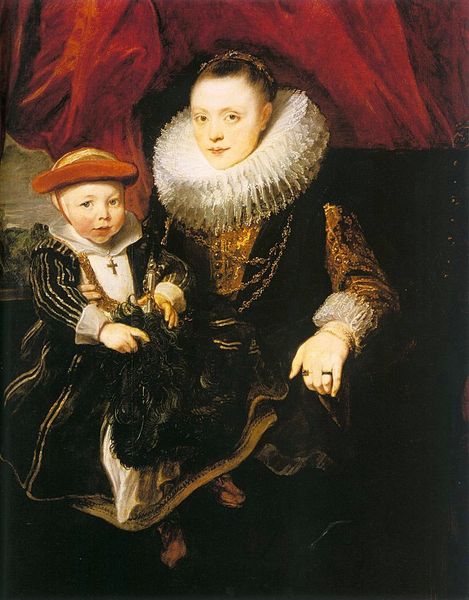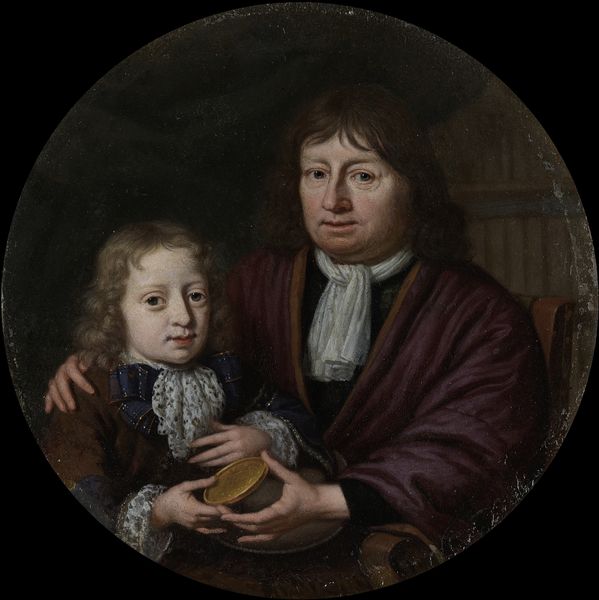
painting, oil-paint
#
portrait
#
baroque
#
dutch-golden-age
#
painting
#
oil-paint
#
genre-painting
Dimensions: height 37 cm, width 45.5 cm, depth 7.5 cm
Copyright: Rijks Museum: Open Domain
Curator: Here we have Caspar Netscher's oil painting, "A daughter and a son (Constantijn?) of the artist", likely completed sometime between 1661 and 1684, a shining example of Dutch Golden Age portraiture held here at the Rijksmuseum. Editor: The somber background and direct gaze create a surprisingly modern sensibility; the two young people seem to contemplate something just beyond the frame. The subdued color palette really brings the textures of their clothing and hair to the fore, doesn't it? Curator: Absolutely, but the lack of ostentatious display feels significant when considering the political and religious landscape of the Netherlands at that time. Portraits of children became fashionable as markers of societal values and familial importance. Editor: Yes, portraits during this time reinforced hierarchical structures within families, as well as signalling economic status to the wider community. How might ideas of childhood innocence or vulnerability play a part in that era, and how might contemporary notions about youthfulness conflict with that historical framing? Curator: That's a fascinating question. While this piece emphasizes youthful beauty and burgeoning individuality, the absence of overt symbols of status could suggest a shifting dynamic within Dutch society— a turn towards private rather than purely public declarations of worth. Editor: So, their expressions - a blend of fragility and resolve - might be reflecting a societal shift away from excess toward restraint, even domesticity, amid the ongoing religious and political tensions. Are these just children, or are they symbols of changing ideals and social responsibilities? Curator: It's likely both. The portrait as a cultural product, performed the social function of conveying class identity while reflecting a particular aesthetic standard. We have a depiction of specific children rendered in such a way to participate and shape the broader historical currents. Editor: That's given me a richer appreciation for the nuanced historical weight embedded within this intimate painting. Thank you. Curator: Indeed, thinking about its position relative to political, social, and artistic trends reveals so much more than just what's on the surface of this artwork.
Comments
No comments
Be the first to comment and join the conversation on the ultimate creative platform.
